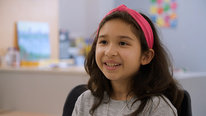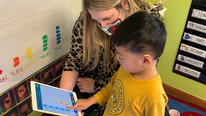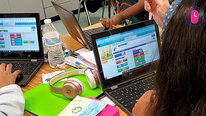- Mary Burns
- https://www.air.org/experts/person/mary-bridget-burns
- Researcher
- CT4EDU: Broadening Pathways into Computing by Developing Computational Thinking Competencies in Elementary Classrooms
- American Institutes for Research
- Jessica Ashley
- Science Consultant
- CT4EDU: Broadening Pathways into Computing by Developing Computational Thinking Competencies in Elementary Classrooms
- Oakland Intermediate School District
- Bob Larson
- Teacher
- CT4EDU: Broadening Pathways into Computing by Developing Computational Thinking Competencies in Elementary Classrooms
- Brandon Public Schools
- Katie Rich
- Researcher
- CT4EDU: Broadening Pathways into Computing by Developing Computational Thinking Competencies in Elementary Classrooms
- American Institutes for Research
- Joseph Wilson
- https://www.linkedin.com/in/josephpatrickwilson/
- Director, CS@AIR and Principal Consultant
- CT4EDU: Broadening Pathways into Computing by Developing Computational Thinking Competencies in Elementary Classrooms
- American Institutes for Research
- Aman Yadav
- http://www.amanyadav.org
- Professor
- CT4EDU: Broadening Pathways into Computing by Developing Computational Thinking Competencies in Elementary Classrooms
- Michigan State University
Public Discussion
Continue the discussion of this presentation on the Multiplex. Go to Multiplex












Mary Burns
Researcher
Hello all and thanks for watching our video! CT4EDU is collaborative project of Michigan State University, the American Institutes for Research, and the Oakland Schools that is funded by the National Science Foundation.
This project designed, implemented, and assessed a high-quality, integrated curriculum, and professional development that supported elementary school teachers in embedding computational thinking (CT) into their classrooms. Currently exposure to CT is too often limited to students participating in an accelerated curriculum (i.e. gifted and talented) or in after school activities (i.e. coding clubs). This is a highly inequitable system in which only those students who have the resources and access can build on CT in their elementary years. By embedding CT into 2nd through 5th grade, in-school science and mathematics curriculum, this project aimed to give all students early access to computing.
We look forward to learning from you, our viewers. To start the discussion, please share your thoughts about these questions:
We look forward to reading your thoughts and questions!
Please do visit our website to learn more about CT4EDU: http://ct4edu.org/
Joseph Wilson
Emily McLeod
Director of Teaching and Learning, Code.org
Hi, Mary, thanks for sharing your project! Subject-area integration is a critical pathway for introducing more students to computer science and computational thinking -- I’d love to learn more about the specifics of your approach to integration. What kinds of activities did students participate in during the project? You mention that teachers focused on meta-cognitive strategies; what did this look like in practice? I’m also curious about outcomes--how did you assess the impact of the project, and what kinds of outcomes did you see? Was there an impact on students’ learning of the science and math content? Look forward to hearing more about the work!
Joseph Wilson
Mary Burns
Aman Yadav
Professor
Hi Mary,
Teachers implemented both unplugged and plugged CT integrated activities in their Math and Science lessons. You can see some of the lessons and teacher resources on our website (http://ct4edu.org/resources/). You can see papers we have published from this work on the website as well (http://ct4edu.org/research/). Primarily we have focused on teacher outcomes and how they implement CT in their classrooms. We are collecting student focused data this year and have not published any results from that work yet.
Mary Burns
Roxana Hadad
Associate Director
What an exciting project, Mary! Emily asked some great questions I am curious about, as well. How did you all define CT? i.e. What concepts did you include as CT concepts? Are students privy to those definitions and are they encouraged to use specific CT terms when describing their metacognitive processes? Can't wait to learn more!
Joseph Wilson
Mary Burns
Aman Yadav
Professor
Hi Roxana, You can see the our CT definition and practices on the project website (http://ct4edu.org/resources/). We focused on four CT practices - Decomposition, Abstraction, Debugging, and Patterns, which are described in the CT Toolkit and how teachers can engage their students in them.
Mary Burns
Joseph Wilson
Director, CS@AIR and Principal Consultant
Hi, Roxana! CT was introduced more at the CSTA K-12 standard "practice" level (i.e. abstraction, decomposition, debugging, etc.), and many teachers used the definitions of these practices explicitly in their instruction with students to reinforce the terminology. For instance, several teachers had a poster in their room defining "debugging", "decomposition", etc. and would use that terminology throughout their instruction... so students were privy to those CT terms!
Mary Burns
Roxana Hadad
Associate Director
Cool! Thank you, Aman and Joey! Did students start using this language themselves?
Mary Burns
Katie Rich
Researcher
Hi Roxana,
We didn't look at this systematically across all implementations, but we definitely heard students using the terms in the classroom observation's we've been able to do. They picked up on decomposition and debugging pretty easily and the teachers told us it was amazing to them how much it helped students describe their thinking. Abstraction was harder for both the kids and the teachers, but some students took to it. Patterns was a challenge in some ways. Kids readily recognize and talk about patterns, but using the patterns to recognize similarities across problems wasn't something that came out a lot.
Mary Burns
Roxana Hadad
Associate Director
Abstraction is always the tricky one! And by the same token, pattern recognition.
Really cool work, Katie. Thanks for sharing!
Mary Burns
Mary Burns
Researcher
Hello Emily and thanks for your note. I am so glad for your interest.
Several teachers were part of this project and they taught students at several different grade levels. Some of the activities the teachers used included:
Yes, the teachers did use meta-cognitive strategies to help students apply their newly acquired computational thinking skills in many content areas. Some examples of this in practice include:
This project began a few years ago and evolved as the complexities of COVID changed how schooling took place with our partners in Oakland. Impact was thought of as the development and implementation of CT lesson plans in math and science but has evolved to include not only lesson plan development but also CT practices across content areas. We have measured this impact through interviews with teachers, classroom observations, and lesson plan studies. The measurement of student learning has also been impacted by COVID over the last few school years but generally, we have measured this by students’ progress in the classroom and on curriculum assessments.
Joseph Wilson
Emily McLeod
Director of Teaching and Learning, Code.org
Thanks for your response, Mary. Super interesting to learn more about the uptake of CT practices and meta-cognitive strategies across content areas. I love that students are thinking about problems as "bugs"!
Mary Burns
Jan Cuny
Dir DEIA for Strategy and Operations
Great project. Strong project team.
How hard or easy has it been to recruit teachers? How much training did they need? How did you measure its impact on students? Have you thought about extending it beyond STEM?
Mary Burns
Aman Yadav
Professor
Hi Jan! So good to see your name pop up!
Covid made it hard for us to recruit teachers, but we are excited to work with a new cohort of teachers this summer. We have 27 elementary teachers who are participating in PD this summer (23 from one school district). Our PD involved 2 days in June to develop CT competencies, 3 days in August to co-design CT-integrated lessons. During the school year, we meet with teachers to do bite-sized PD and reflections on their implementation. We are currently collecting student data on how CT impacts their identities and belonging in CS/STEM.
We are expanding it beyond STEM at the middle school level. I have a STEM+C that focuses on working with middle school ELA, Arts, and Social Studies teachers to integrate CT. (https://ctintegration.org).
Aman
Mary Burns
Katie Rich
Researcher
Hi Jan! I'll just add one more comment to Aman's post. Even in our very first year of implementations, teacher immediately saw connections beyond STEM. We intended to focus on math and science (and our PD centered on that), but teachers found these CT practices in all aspects of their instruction. Examples I can think of include one teacher thinking about how decomposition could be useful to support student writing (e.g., thinking about one part of an essay at a time) and another teacher thinking about how using codable robots might help students think about different geological terrains.
Mary Burns
Jan Cuny
Dir DEIA for Strategy and Operations
Thanks, Katie. That's nice that the teachers made those connections and I'm sure there are lots more that can be made.
Mary Burns
Jacob Wolf
Integrating CT across curricula is no easy task, but a really important approach to making computation more accessible.
I'm curious about the teachers who are participating in this project. How did you recruit/select them and how much experience (if any) did they have with CT? Our project is working on a slightly different topic (Integrating computational modeling into science classrooms), but one big part of this is helping teachers gain experience and confidence in teaching CT as part of a computational modeling practice. Have you found any approaches/activities/insights that have helped teachers who do not have as much experience with computational thinking begin teaching CT in their classrooms?
Mary Burns
Mary Burns
Researcher
Hi @jacob and thank you for you question. I look forward to reviewing your team's video. Our Michigan State partners has a long-standing partnership with the Oakland Schools. Before the pandemic, our team found holding professional development sessions with teachers (those with experience and those without) with many hands-on activities to be beneficial. This meant pairing teachers without experience with those with CT experience. Additionally, ongoing conversation, lesson sharing, and idea exchange continued during the pandemic through asynchronous means, such as Google docs and Zoom meetings, to help progress the teachers' CT instructional skills.
Jacob Wolf
Jacob Wolf
Thanks for this response, Mary. We're about to enter the 3rd year of our project, and we hope to use a similar model where our teacher partners who joined earlier can begin mentoring teachers who join in the coming year. Thanks for sharing that this has been effective for you!
Mary Burns
Mary Burns
Researcher
You are most welcome, Jacob! I look forward to following your progress in future video showcases!